Fast Facts on AI Data Governance Measurement and Audits
-
AI data governance refers to the systems and practices that ensure AI models handle data ethically, transparently, and in compliance with regulations. Poor governance can trigger regulatory exposure, incident costs, and reputational harm when assistants overshare or cite unapproved sources.
-
Measuring governance transforms vague concepts like trust and compliance into actionable metrics that guide policy, reduce risk, and ensure continuous alignment.
-
Core metrics include leakage rate, groundedness, policy hit rate, and access review completion, each tracking a different facet of AI system reliability and safety.
-
Automated dashboards, telemetry, and decision logs enable real-time monitoring, speeding up incident detection and reinforcing audit readiness.
-
A layered audit strategy, continuous monitoring, quarterly internal checks, and annual external audits ensure scalable, certifiable governance tied to frameworks like ISO 42001 and the NIST AI Risk Management Framework (RMF).
Why Measuring AI Data Governance is Important
Reliable AI data governance measurement and audit practices create a transparent foundation for trust and accountability. In modern enterprises, data moves fast and across multiple systems, making oversight difficult without clear AI governance metrics. Measurable governance transforms compliance from reactive paperwork into continuous assurance. Organizations gain clarity about where sensitive data flows, which policies are enforced, and where exceptions occur. Decision-makers can act on evidence instead of assumptions, improving both operational and regulatory confidence.
The primary purpose of governance measurement is to make abstract values, such as trust, compliance, and ethical behavior, visible and actionable. Quantification links technical controls to organizational outcomes, showing whether models perform as intended and adhere to policy boundaries. Metrics like groundedness or leakage rate demonstrate how often assistants rely on verified data sources and where they risk oversharing. Tracking such data creates an auditable trail that regulators and auditors can easily interpret. Measurement also supports continuous alignment between engineering and compliance functions. When deviations appear, teams can retrain, reclassify, or update connectors in time. Regularly collected metrics reveal emerging risks and guide investment toward the most vulnerable systems. In highly regulated industries, measurable trust becomes a competitive differentiator, proof that governance works, not just that policies exist.
What Does Measurement Enable?
Consistent measurement unlocks an ecosystem of improvement. Trends expose where policies succeed and where they fail. Executives gain dashboards that connect AI usage to enterprise risk exposure, replacing anecdotal updates with complex data. The process enhances risk visibility by highlighting areas where data sensitivity, model drift, or user behavior shift over time. It also accelerates reporting cycles. Metrics feed compliance summaries, audits, and ESG disclosures automatically. Governance metrics further encourage cultural change. When users see how their actions influence system outcomes, responsible AI practices become part of daily work.
Measurement is not just a defensive mechanism. Rather, it is an enabler of maturity, guiding organizations from basic compliance toward optimized, self-correcting governance. This is a progression similar to the maturity tiers defined in the National Institute of Standards and Technology (NIST) AI RMF and the International Organization for Standardization’s ISO 42001 audit frameworks. Early-stage programs typically operate at “reactive” or “defined” levels, focused on control establishment. At the same time, advanced organizations reach “managed” and “optimized” stages, where governance is automated, continuously improved, and embedded into daily operations.
What Are the Key Metrics for Measuring AI Governance
A standardized metric set quantifies risk, quality, compliance, and operational resilience, enabling leaders to tune controls, detect drift early, and prove outcomes.
Leakage Rate
Leakage rate tracks the percentage of redacted or blocked outputs generated by AI assistants. High rates may signal weak labeling or excessive exposure of sensitive data, while consistently low rates indicate practical purpose and access controls. Monitoring this number over time helps detect new risks as data repositories or model connectors expand. Benchmarking against historical averages reveals how well preventive policies perform. Many organizations now integrate leakage tracking directly into AI data governance dashboards for real-time oversight.
Groundedness and Provenance Coverage
Groundedness measures how frequently AI responses cite approved or authoritative sources. High provenance coverage ensures that outputs are based on trusted datasets, reducing hallucinations and misinformation. This metric validates whether models remain tethered to enterprise knowledge rather than external noise. Tracking provenance helps refine retrieval policies and detect missing links in knowledge graphs. Governance systems automate provenance scoring to simplify compliance documentation and improve transparency.
Policy Hit Rate
Policy hit rate counts the number of enforced actions, such as redactions, denials, or alerts. A spike in policy that hits during a rollout often reflects tighter controls, whereas sustained elevation may indicate usability issues or poor data classification. Analyzing hit distribution across departments uncovers where governance friction occurs. Trend analysis can guide fine-tuning of access models without weakening compliance. A healthy program balances strict enforcement with minimal operational disruption.
Access Review Completion
Access review completion measures the share of scheduled certifications finished on time. Delays often reveal weak accountability or unclear ownership within identity governance. Maintaining a high completion percentage signals that privilege reviews, entitlements, and revocations are functioning correctly. Consistent tracking reduces insider risk and prepares organizations for audits. Integration with persona-based access control (PBAC) tools further streamlines certification workflows across teams.
DPIAs and Risk Assessments Completed
Data Protection Impact Assessments (DPIAs) and model risk reviews verify whether AI systems meet privacy and ethical obligations. This metric proves compliance with frameworks like the EU General Data Protection Regulation (GDPR), NIST, and the EU AI Act. Completion rates reveal governance discipline and transparency levels. Tracking updates ensures assessments remain current as datasets, algorithms, or partners change. Evidence from DPIAs strengthens regulatory reporting and external certification readiness.
Data Classification Coverage
Coverage indicates the portion of enterprise content labeled by sensitivity, ownership, and purpose. Without comprehensive classification, other governance controls lose precision. Tracking coverage ensures new data sources are quickly labeled and integrated. Mature programs automate labeling and validate accuracy through sampling. As classification accuracy improves toward 95% or higher, false positive alerts in policy enforcement tend to decline because misclassifications and spurious matches drop. Advanced classification systems already advertise more than 95% accuracy to reduce false positives in data loss prevention (DLP) and governance systems. Progress over time reflects organizational commitment to structured governance and proactive risk prevention.
Model and Connector Drift
Drift refers to any deviation in model behavior or connector performance due to data shifts or configuration changes. Frequent retraining or untracked integrations can cause governance blind spots. Monitoring drift events highlights when new validations or retraining are required. Clear documentation of updates helps link changes to performance and compliance metrics. For instance, a spike in connector drift after application programming interface (API) updates in data-intensive industries like finance can directly impact accuracy, making early detection essential for audit readiness. Early detection of drift reduces model risk and prevents silent degradation of trustworthiness.
Mean Time to Detect and Respond (MTTD/MTTR)
These metrics capture how quickly teams identify and resolve governance incidents. Short detection times demonstrate effective monitoring, while fast response times reflect operational maturity. Combining mean time to detect (MTTD) and mean time to repair (MTTR) provides a complete picture of incident lifecycle performance. Benchmarking these values across reporting periods reveals how resilience improves. Automation and security information and event management (SIEM) integration often dramatically reduce both times, transforming AI audit logs into proactive alerts. A study of ML-driven detection systems, published in March 2025, shows that organizations with automated pipelines cut MTTD by 40% and MTTR by 35%, thanks to faster alerting and integrated response workflows.
Measuring AI Governance in Practice
In practice, it is important to combine quantitative AI governance KPIs, qualitative feedback, and automated dashboards to turn governance signals into real-time decisions and continuous improvement.
Quantitative Metrics
Quantitative indicators form the core of automated governance reporting. Leakage rate and policy trigger counts expose real-time control efficiency. Adoption by persona tracks user participation and helps tailor policies to risk levels. Power decision point (PDP) latency metrics quantify operational health and support predictive analysis. Over time, trends guide process automation and resource allocation.
Qualitative Indicators
Qualitative metrics evaluate perceived usability and alignment between governance controls and user workflows. Feedback on clarity of redaction messages or policy fairness indicates whether controls align with daily workflows. Fewer escalations and faster audit readiness show growing confidence in the system. Monitoring sentiment around compliance tools also predicts adoption success. Periodic surveys and feedback analytics transform these perceptions into measurable indicators, replacing subjective impressions with quantifiable satisfaction scores. Additionally, combining subjective impressions with complex data provides a holistic view of maturity.
Dashboards and Automation
An AI data governance dashboard turns complex governance data into actionable insights. Live visualizations display lineage coverage, risk severity, and audit readiness in one place. Automated workflows alert teams when KPIs breach thresholds or drift accelerates. Integration with SIEM, Purview, or identity and access management (IAM) platforms ensures unified visibility across the AI stack. Modern tools such as Knostic Knowledge Controls enable automatic export of audit evidence, linking prompt-to-policy decisions directly to dashboards. Automation minimizes manual overhead and makes governance continuous rather than periodic.
Data Sources for Governance Measurement
Reliable AI data governance relies on a connected ecosystem of data sources. A supporting diagram can show how decision logs, audit trails, telemetry, and integrations feed a unified governance dashboard, clarifying data lineage and accountability across platforms.
Decision Logs
Reliable measurement starts with clean, well-scoped data feeds. Different sources answer different questions, so the collection must align with specific KPIs. Normalized schemas prevent gaps when logs arrive from multiple tools, and time synchronization across systems preserves sequence and causality. Access controls on the data lake protect integrity and the chain of custody. Retention policies balance audit needs with privacy obligations under laws like the EU AI Act. Decision logs capture the exact outcome at the point of policy evaluation. Each record should store attributes, the policy version, and the final effect: allow, deny, redact, or step-up. Context, such as requesting persona, data domain, and justification, unlocks powerful analytics. Consistent keys for user, session, and resource make joins across systems straightforward. Cryptographic hashing or append-only storage strengthens evidentiary value for audits aligned to the NIST AI RMF.
Audit Trails
Audit trails describe who did what, where, and when across systems that feed or enforce governance. Typical entries include access attempts, labeling changes, permission grants, and denied actions. Granular trails expose misuse patterns and support investigations without reading raw content. Tamper-evident storage and documented rotations keep the record credible. Mapping trail fields to controls in ISO 42001 simplifies readiness checks and certification prep using the standard’s management-system lens.
AI Assistant Telemetry
Assistant telemetry provides the operational lens on prompts, retrieved context, and model responses. Token-level metadata and source IDs allow groundedness scoring without retaining sensitive text. Purpose, persona, and device posture add the risk context missing from raw model logs. Sampling and masking policies preserve privacy while keeping metrics reproducible. When correlated with audit trails and decision logs, telemetry helps reconstruct complete event chains, enabling regulators and auditors to understand not only what the model produced but also why each decision occurred.
Integrations
Integration points connect governance data to security and compliance operations. SIEM correlation links policy hits to broader incident timelines, while security orchestration, automation, and response (SOAR) playbooks automate containment and notifications.
Data-catalog and labeling tools such as Purview keep sensitivity and lineage current for enforcement. Identity platforms supply certification status, session risk, and device trust to enrich decisions. Joint architectures reduce swivel-chair work and shorten response times. As a 2024 IMB report reveals, this drives down breach impact.
AI Data Governance Audit Framework
The next step in this process is an AI data governance audit, aimed at defining a proper audit framework through these five significant, easy-to-follow steps.
Define Audit Scope
List in-scope AI models, data domains, connectors, and personas. Note applicable laws, internal standards, and contractual obligations. Prioritize high-impact workflows such as exports, summaries, or code generation. Set sampling rules for interactions, repositories, and time windows. Then, confirm owners, evidence locations, and SLAs for responses to findings.
Collect Audit Evidence
Export decision logs, lineage graphs, access records, and policy versions from governance systems. Capture masked examples of prompts, retrieved context, and outputs for reproducibility. Hash artifacts and record timestamps to preserve the chain of custody. Store all items in a hardened, access-controlled repository. Align evidence fields with clauses from the EU AI Act, NIST, and ISO 42001 to streamline your review.
Review Enforcement Effectiveness
Compare written policy to actual power decision point/policy enforcement point (PDP/PEP) outcomes across sampled cases. Verify that redactions, denials, and step-ups are triggered under the right conditions. Look for bypass paths in connectors, unmanaged tools, or shadow workflows. Correlate policy hits with user friction to tune rules without weakening protection. Document gaps with severity, root cause, and proposed control changes.
Assess AI Outputs
Score groundedness by checking citations to approved sources. Some high-risk domains aim for groundedness ≥ 90% and hallucination < 10% based on internal models and risk policy. Measure hallucination rate using curated test prompts and known-answer sets. Validate redaction accuracy on sensitive fields such as personally identifiable information (PII), secrets, and regulated data. Be sure to examine variance across personas and devices to detect contextual weaknesses. Record defects with evidence, reproduction steps, and acceptance criteria for fixes.
Generate Reports
Summarize compliance status with heat maps by system, data domain, and team. Include KPI trends for leakage, policy hit rate, groundedness, and MTTD/MTTR. Provide a prioritized remediation plan with owners, due dates, and expected risk reduction. Attach an evidence index linking log IDs, trails, and telemetry samples.
The executive summary should synthesize these findings for risk and compliance committees, highlighting material issues, residual risks, and governance performance trends. It should explicitly state audit scope, methodology, and alignment with frameworks such as ISO 42001, NIST AI RMF, and GDPR. Charts like KPI trends or incident frequency, should accompany a narrative explaining operational impact, business risk, and resource requirements for remediation. For maximum impact, close with an executive brief that connects outcomes to enterprise risk, budgets, and timelines.
Audit Frequency and Ownership
Sustain AI governance by combining continuous monitoring, quarterly internal audits, annual independent assurance, and a clear ownership matrix. This will turn telemetry into action and make compliance proactive and durable.
Continuous Monitoring
Real-time observability transforms compliance from static reporting into active risk defense. Decision logs, telemetry, and lineage data stream into dashboards where alerts trigger the moment leakage, drift, or unusual access occurs. Governance and security teams gain a synchronized view of AI behavior, enabling faster containment and correction. Automated alerts tied to policy hit rates or groundedness scores allow issues to be addressed before they reach auditors. This kind of discipline strengthens the link between AI security operations and enterprise risk management.
Quarterly Internal Audits
Quarterly cycles provide the balance between agility and accountability. Internal reviews validate that KPIs, access certifications, and labeling accuracy remain consistent as teams and datasets evolve. Findings flow directly into retraining, labeling, and connector updates. There is no doubt that collaboration across roles is key. Data governance leads verify lineage, security architects review controls, and compliance officers ensure each fix meets regulatory intent. Over time, these checkpoints transform audits from reactive chores into predictable, data-driven sprints of improvement.
Annual Independent Audit
External reviews serve as formal proof of maturity and readiness for certification frameworks such as ISO 42001 or NIST AI RMF. Independent auditors verify control operation, sampling evidence from decision logs, redaction events, and access reviews. Ultimately, their validation reassures regulators, partners, and investors that AI data governance meets international standards. Annual audits also benchmark internal metrics against peers, giving executives measurable context for improvement roadmaps and investment planning.
Ownership Matrix
Governance only scales when ownership is explicit. Chief information security officers, (CISOs) steer overall compliance and incident management. Data Governance teams curate lineage, enforce data classification coverage, and validate provenance mapping. Legal and data protection officer (DPO) offices interpret privacy laws and manage DPIAs. Engineering and operations leads maintain connectors, telemetry, and retraining schedules. Regular cross-team reviews synchronize responsibilities, ensuring that every KPI has a clear steward. This approach helps to avoid gaps that often appear when AI deployments grow faster than policy oversight.
How Knostic Simplifies AI Data Governance Measurement and Compliance
Knostic applies answer-time PBAC at the knowledge layer, where assistants search and compose by evaluating each response against labels, persona, and context, then blocking, redacting, or reshaping it before display. It closes the inference-time gap left by file-centric tools, runs readiness assessments, and prompt simulations with real access profiles like Copilot, OneDrive, SharePoint, and Glean. Then, it streams telemetry to dashboards and SIEM so leakage rate, policy hits, groundedness, and adoption are monitored continuously without resorting to blanket repository shutdowns.
Knostic captures tamper-evident lineage (prompt, retrieval, policy decision, output) with attributes, policy IDs, and redaction reasons, exporting evidence to SIEM and GRC systems for audits and investigations. This evidence model supports DPIAs and regulatory reviews (including GDPR, EU AI Act, and HIPAA), aligns with ISO/IEC 42001 management-system practices, and uses the NIST AI RMF as a governance reference, accelerating incident response and time-to-reporting.
What’s Next
Explore the whole framework for measurable and auditable AI governance in Knostic’s LLM Data Governance White Paper, Data Governance in the Age of LLMs, and then decide if Knostic can help you with governing your solution.
FAQ
• What are the most important KPIs for AI data governance?
Leakage rate, groundedness, policy hit rate, and MTTD/MTTR provide the clearest view of risk and performance. Additional indicators, such as access review completion and classification coverage, show governance maturity over time.
• How often should AI data governance audits be performed?
Continuous monitoring runs daily; internal audits occur quarterly to maintain compliance momentum. Independent external validation should be conducted annually or when pursuing ISO 42001 or NIST certification.
• What tools help automate AI data governance measurement and audit?
Knostic connects policy enforcement, monitoring, and evidence collection in one platform. Integration with SIEM, SOAR, Purview, and identity systems ensures automated coverage of the entire AI lifecycle, from data classification to incident reporting, without disrupting productivity.

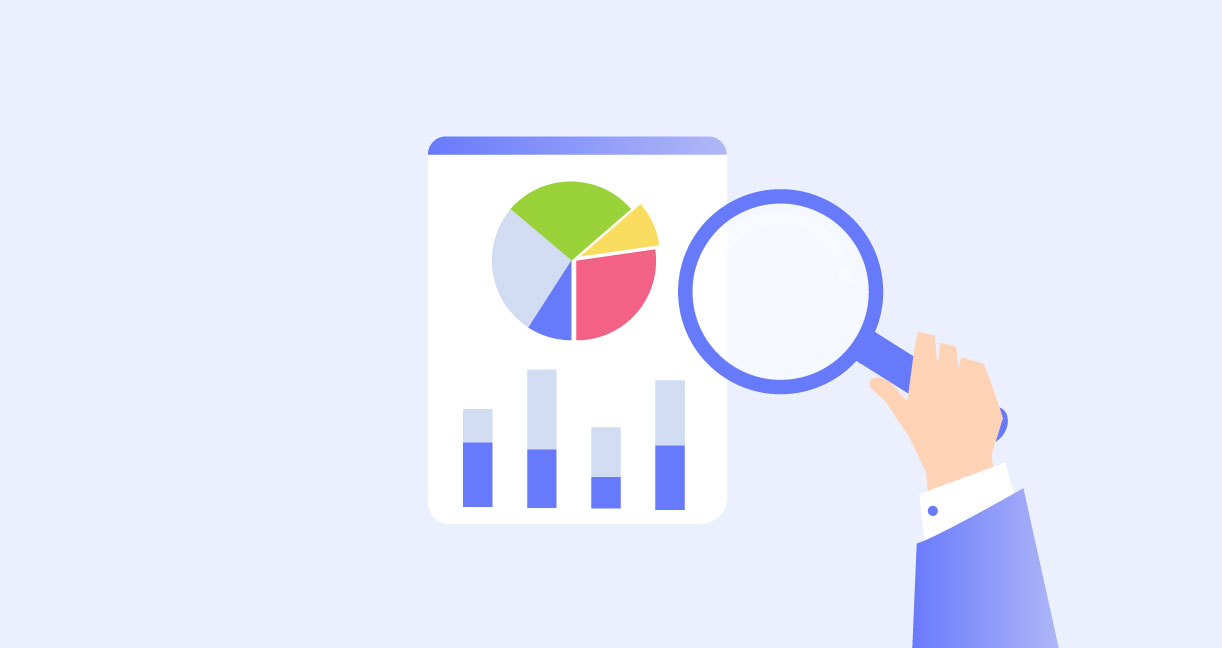
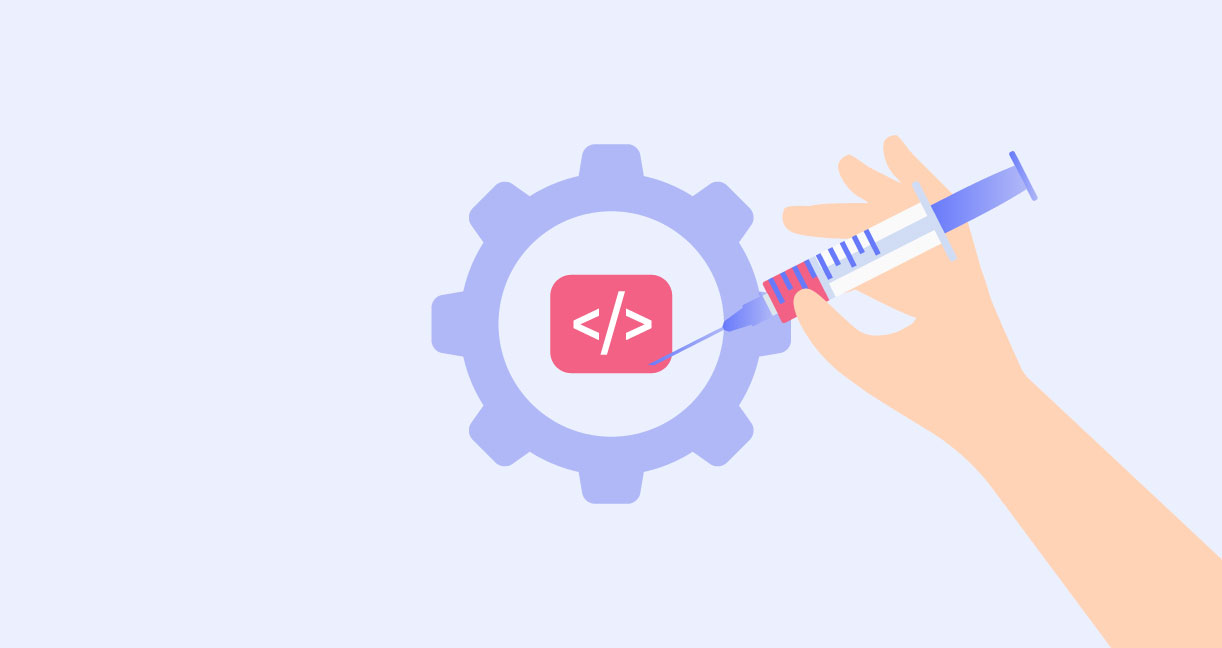




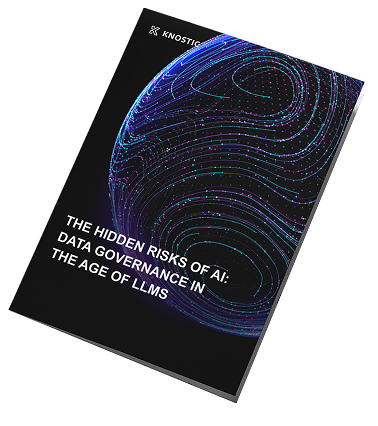
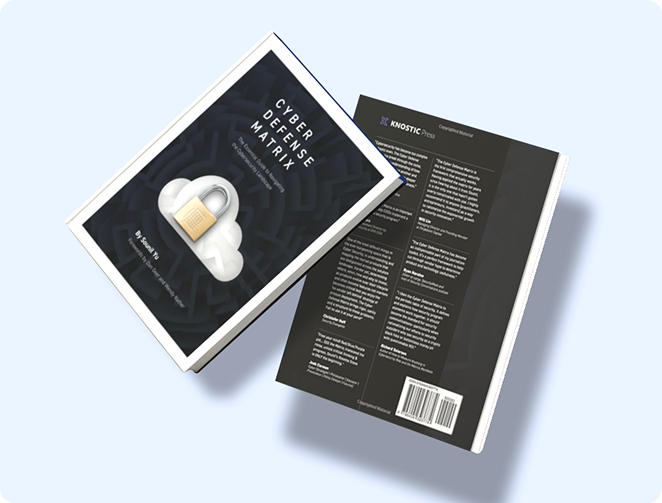
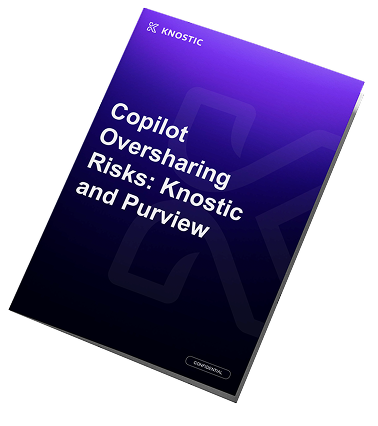

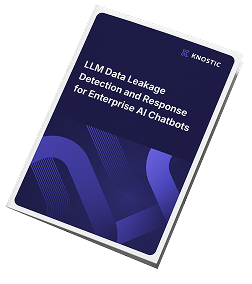

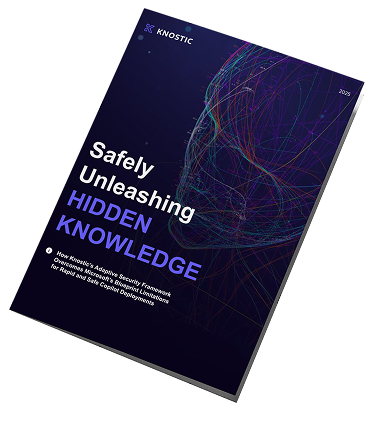




![AI Data Governance Guide for Enterprise Teams [2025]](https://www.knostic.ai/hs-fs/hubfs/What-is-AI-data-governance.jpg?width=520&height=294&name=What-is-AI-data-governance.jpg)


